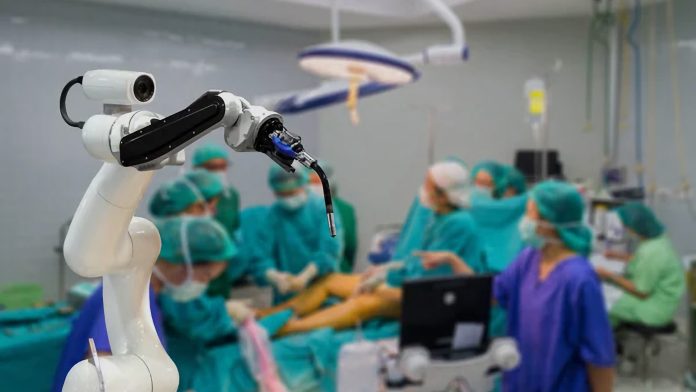The incursion of robotics into the healthcare sector is revolutionising the way medical procedures are performed, offering unprecedented precision and efficiency. Robotic technology is transforming surgeries, improving clinical outcomes and reducing patient recovery time.
A prime example of this innovation is the collaborative project between Bumerania and the Fundación de Investigación Hospital General Universitario de Valencia, which has resulted in a robotic device specialising in uterine and colorectal operations.
The device developed by Bumerania in collaboration with the Foundation, currently under development, will represent a significant advance in minimally invasive surgery. Equipped with high-precision robotic arms and advanced imaging systems, this robot will allow surgeons to perform complex operations with smaller incisions and greater accuracy. This technology reduces the risk of complications, minimises post-operative pain and speeds up patient recovery, significantly improving patient experience and outcomes.
This project underlines the potential of robotics to transform the healthcare sector. The collaboration between Bumerania and the Fundación de Investigación Hospital General Universitario de Valencia is a clear example of how technology can be integrated into medical practice to offer innovative and effective solutions. Robotics will not only improve clinical outcomes, but also optimise hospital resources, allowing healthcare professionals to focus on patient care.
The adoption of robotics in surgery is part of a broader trend towards automation and digitalisation in the healthcare sector. With an ageing population and an increase in chronic diseases, the demand for efficient and safe surgical procedures is growing. Robotics offers an answer to this demand, providing tools that improve precision, reduce intervention times and improve the quality of life of patients, thus robotics is playing a crucial role in the evolution of the healthcare sector. The collaborative project between Bumerania and the Fundación de Investigación Hospital General Universitario de Valencia is an example of how technological innovation can significantly improve medical procedures and patient outcomes.
The project is in the development phase and is not yet available for clinical use. However, it is hoped that, following an in-depth study to evaluate its effectiveness compared to traditional surgery and to obtain approval for healthcare use, this innovative system could revolutionise uterine and rectal surgeries, improving their efficiency and safety.





